
The man has retired. The 49-centuries hero has finally bid adieu to an illustrious 23-year-old career that changed the very definition of Indian batting. Words fail when you attempt to glorify this cricketing legend. You turn to numbers instead. If 18,426 runs at an incredible average of 44:83 in 463 matches with a record 49 centuries and 96 staggering 50s don’t tell you the story, nothing ever will. Sachin Tendulkar was indeed in a league of his own. Thank you, little master. Thank you for the memories. Spoken enough from the mind; here’s what the heart thinks: Sachin was a great batsman. I envy him. In fact, I envy the whole of India because he represented and scored all those runs for them. I envy him, because if Pakistan had someone of his calibre and class, we would have been a different force today. As much as I hate to admit this, the reality is that Pakistan was a ‘Tendulkar’ away from glory – the glory and success that deserted us throughout the last ten years in one-day cricket. In 2003, Saeed Anwar retired. He was Pakistan’s run machine, someone who was considered this country’s answer to Tendulkar. It’s been almost 10 years now and believe it or not, we are yet to find an able replacement, an opener extraordinaire, who could tear apart bowling attacks and pile on the runs. That’s when you realise how Pakistan could have done with a Tendulkar up top. How Pakistani bowlers who more often than not succeeded in restricting the oppositions to mediocre first-inning totals would have loved someone like a Tendulkar to score those runs and avoid the hiccups (read: Pakistan batting’s infamous chasing blues) that earned them the ‘unpredictables’ tag. When was the last time you saw a Pakistani opener go on a lengthy streak playing with consistency, confidence, flamboyance and flair like Tendulkar? From the Wastis to the Nazirs, from the Afridis to the Akmals, we’ve seen a whole host of names come and go. But no one, no one was even remotely close to Tendulkar. The harsh reality is that we just couldn’t produce one. Furthermore, I get atrociously envious thinking about what could have been if we had a Tendulkar playing for us in the 1999 World Cup final or in the disastrous 2003 and 2007 World Cups. My blood boils when I hear that tone of uncertainty in the voice of commentators when we’re chasing a low total. That’s the reputation we have built during the past ten years. A reputation that has developed because of the absence of a Tendulkar. This also reminds me of the popular argument that most Pakistani fans, including myself, present about all those centuries that Tendulkar scored. We say:
"Whenever Sachin gets a 100, India lose."Oh, who are we kidding? How does that undermine the misery he piled up on opposition teams? How was it his fault that the Indian bowlers were not good enough to clean up or restrict the opposition batsmen? That’s when you think what a wonderful match Sachin Tendulkar and Pakistan would have made. A match truly made in heaven. Sachin’s master class supported by Pakistan’s plethora of bowling talent – it’s the stuff dreams are made of. So don’t blame me for being envious that we weren’t blessed with him. I speak here as a disgruntled Pakistani fan, who respects Tendulkar from the bottom of his heart, for what he has achieved in the sport, but also hates him with equal intensity for scoring all those runs for our arch-rivals. I’m envious because Pakistan was indeed a Tendulkar away from glory through all these years. Wasim Akram, arguably one of the greatest fast bowlers of all time, had this to say about Tendulkar upon his retirement:
“Sachin was really 16 at the time when he came to Pakistan in 1989 and Waqar and I thought, ‘What will this 16-year-old do against us?’ I hit him in his face but he still showed a lot of gumption and courage and went on to score a 50 in the fourth Test in Sialkot and that is when we realised that this man was a special, special talent.”Exactly, Wasim bhai, exactly! Read more by Emad here, or follow him on Twitter @EmadZafar




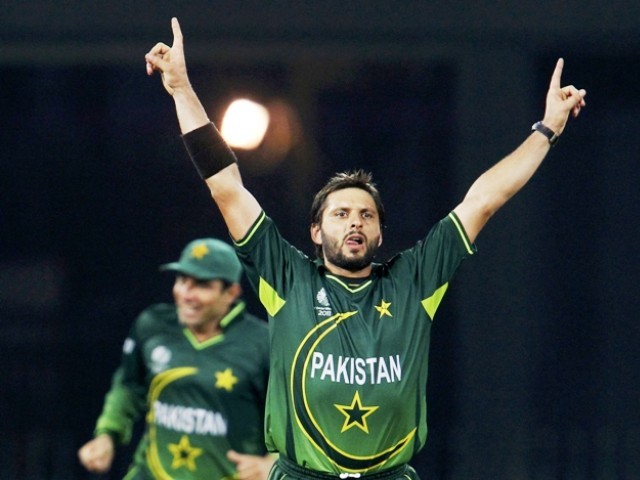 Photo: Reuters
Although Afridi has faced a rough patch, I am certain that he will bounce back in to form and please us again in the T20 series against South Africa.
As
Photo: Reuters
Although Afridi has faced a rough patch, I am certain that he will bounce back in to form and please us again in the T20 series against South Africa.
As 



 PHOTO: REUTERS[/caption]
Now that Pakistan has been knocked out of the last Champions Trophy, the most disappointing aspect of this is that Pakistan’s batting has been the reason behind it. Yet again, our batsmen failed miserably against a downsized South African attack and an abysmal West Indies attack, both of whom got thrashed by the Indian batsmen.
[caption id="" align="alignnone" width="500"]
PHOTO: REUTERS[/caption]
Now that Pakistan has been knocked out of the last Champions Trophy, the most disappointing aspect of this is that Pakistan’s batting has been the reason behind it. Yet again, our batsmen failed miserably against a downsized South African attack and an abysmal West Indies attack, both of whom got thrashed by the Indian batsmen.
[caption id="" align="alignnone" width="500"] PHOTO: AFP[/caption]
What personally has most disappointed me about the tournament is that the batsmen failed to show the heart that their captain showed. Leading from the front and scoring back-to-back fifties should have been enough to secure at least one victory if not two, but if on the other end the batsmen are struggling to reach double figures, it is not a wonder that we could not overcome even a meagre target of 235.
Pakistan had come to the tournament as one of the top contenders for the trophy and after their dismal performance, barring the captain''s role, Misbah rightfully
PHOTO: AFP[/caption]
What personally has most disappointed me about the tournament is that the batsmen failed to show the heart that their captain showed. Leading from the front and scoring back-to-back fifties should have been enough to secure at least one victory if not two, but if on the other end the batsmen are struggling to reach double figures, it is not a wonder that we could not overcome even a meagre target of 235.
Pakistan had come to the tournament as one of the top contenders for the trophy and after their dismal performance, barring the captain''s role, Misbah rightfully 



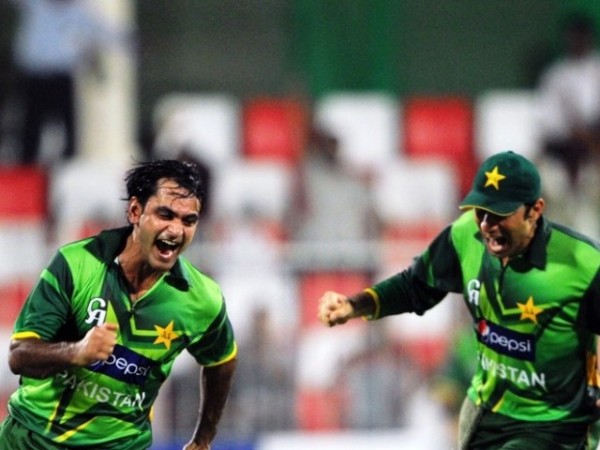 It is high time that Misbahul Haq steps down from the captaincy in the ODI format at least, and Pakistan brings in an attacking captain like Muhammad Hafeez. Photo: File[/caption]
Even if Pakistan loses after showing positive intent, it feels good, but it really kills the spirit of Pakistani fans when the team enters that slow mode, scores 20-30 runs in the first 10 overs for a loss of two or three wickets; it is obvious that they will end up losing the match the dull, boring way.
Pakistan will definitely need Misbah in the 2015 World Cup and as he has recently said, he wants to play in the mega event. However, it will be so much better if he plays in the team as a senior batsman and lets someone positive lead the team.
There is no doubt that Misbahul Haq has done a lot for Pakistani cricket. After all, he built a team after the spot fixing fiasco and gave us some memorable wins against England and in the Asia Cup. However, in my honest opinion, he should have stepped down after the
It is high time that Misbahul Haq steps down from the captaincy in the ODI format at least, and Pakistan brings in an attacking captain like Muhammad Hafeez. Photo: File[/caption]
Even if Pakistan loses after showing positive intent, it feels good, but it really kills the spirit of Pakistani fans when the team enters that slow mode, scores 20-30 runs in the first 10 overs for a loss of two or three wickets; it is obvious that they will end up losing the match the dull, boring way.
Pakistan will definitely need Misbah in the 2015 World Cup and as he has recently said, he wants to play in the mega event. However, it will be so much better if he plays in the team as a senior batsman and lets someone positive lead the team.
There is no doubt that Misbahul Haq has done a lot for Pakistani cricket. After all, he built a team after the spot fixing fiasco and gave us some memorable wins against England and in the Asia Cup. However, in my honest opinion, he should have stepped down after the 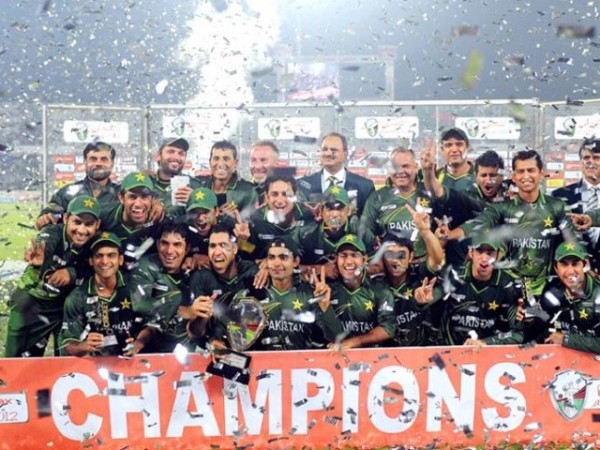 Pakistan was able to edge out Bangladesh in a tense final and clinch their second Asia Cup title. Photo: AFP[/caption]
Having said that, it is never too late and change is always good.
This post originally appeared
Pakistan was able to edge out Bangladesh in a tense final and clinch their second Asia Cup title. Photo: AFP[/caption]
Having said that, it is never too late and change is always good.
This post originally appeared 


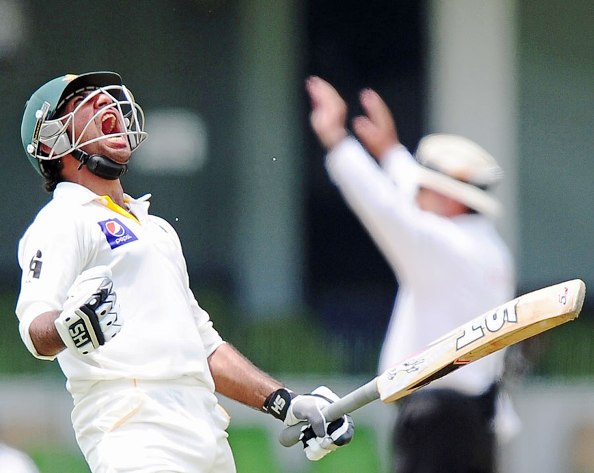 Photo: AFP[/caption]
[caption id="" align="alignnone" width="594"]
Photo: AFP[/caption]
[caption id="" align="alignnone" width="594"]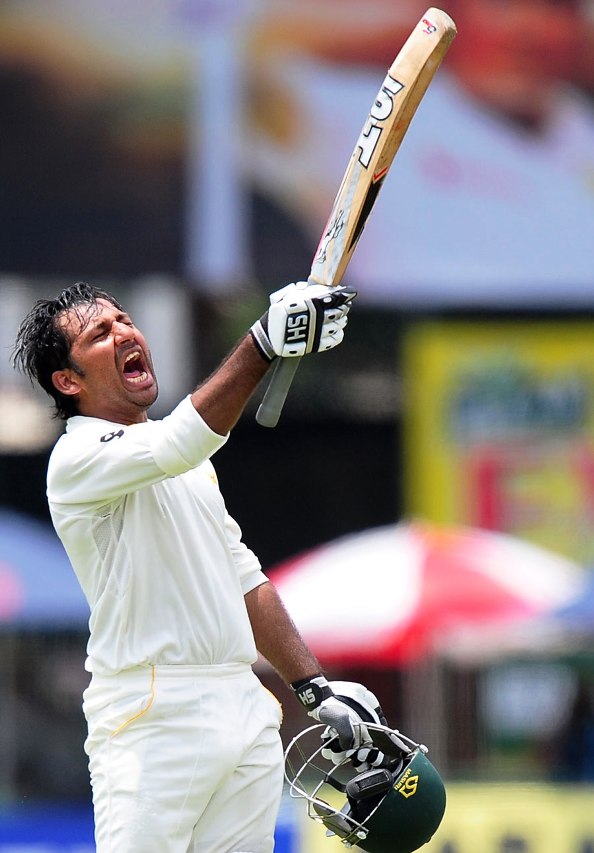 Photo: AFP[/caption]
The loud shriek of excitement from the keeper could be heard even in Hobart, Jo’Burg and Centurion.
As a cameraman of the broadcasters switched over to the Pakistan pavilion, I started searching for Moin. The camera panned left from right and as the shot was about to finish, I spotted Moin standing in the right corner sporting a big smile with his hands aloft and clapping hysterically. The words of Moin from that Ramazan evening reverberated in my ears.
Photo: AFP[/caption]
The loud shriek of excitement from the keeper could be heard even in Hobart, Jo’Burg and Centurion.
As a cameraman of the broadcasters switched over to the Pakistan pavilion, I started searching for Moin. The camera panned left from right and as the shot was about to finish, I spotted Moin standing in the right corner sporting a big smile with his hands aloft and clapping hysterically. The words of Moin from that Ramazan evening reverberated in my ears.



 Virat Kohli was a relieved man after his 21st century, India v West Indies, 4th ODI, Dharamsala, October 17, 2014. Photo: BCCI[/caption]
[caption id="" align="alignnone" width="540"]
Virat Kohli was a relieved man after his 21st century, India v West Indies, 4th ODI, Dharamsala, October 17, 2014. Photo: BCCI[/caption]
[caption id="" align="alignnone" width="540"] Virat Kohli blows a kiss to the crowd after crossing 6000 ODI runs, India v Sri Lanka, 3rd ODI, Hyderabad, November 9, 2014. Photo: BCCI[/caption]
A phenomenal stroke-maker all around the wicket, Kohli is also a nightmare for any bowler once in flow. He is capable of decimating the best attacks in the world on any given day and is not just a flat track bully as his performances outside the subcontinent have shown.
He often comes across as a brash individual and rubs people up the wrong way with his attitude but he has been maturing with time. He still wears his heart on his sleeve whenever he plays for India, and that aspect might have to change a little if he has ambitions to be an
Virat Kohli blows a kiss to the crowd after crossing 6000 ODI runs, India v Sri Lanka, 3rd ODI, Hyderabad, November 9, 2014. Photo: BCCI[/caption]
A phenomenal stroke-maker all around the wicket, Kohli is also a nightmare for any bowler once in flow. He is capable of decimating the best attacks in the world on any given day and is not just a flat track bully as his performances outside the subcontinent have shown.
He often comes across as a brash individual and rubs people up the wrong way with his attitude but he has been maturing with time. He still wears his heart on his sleeve whenever he plays for India, and that aspect might have to change a little if he has ambitions to be an  A few heated words were exchanged as Virat Kohli left the field, England v India, 3rd ODI, Trent Bridge, August 30, 2014. Photo: AFP[/caption]
During their last visit to Australia, India went down in a 4-0 Test series whitewash, but the only bright aspect of that tour was Kholi’s performance. He scored a
A few heated words were exchanged as Virat Kohli left the field, England v India, 3rd ODI, Trent Bridge, August 30, 2014. Photo: AFP[/caption]
During their last visit to Australia, India went down in a 4-0 Test series whitewash, but the only bright aspect of that tour was Kholi’s performance. He scored a 







